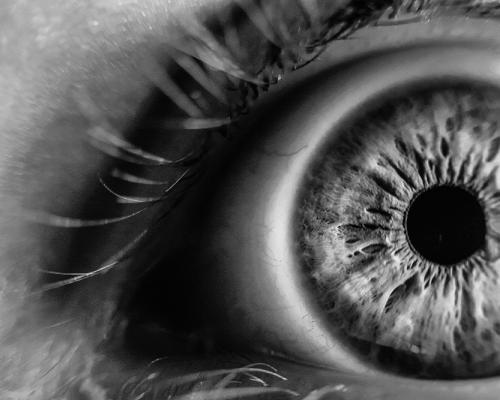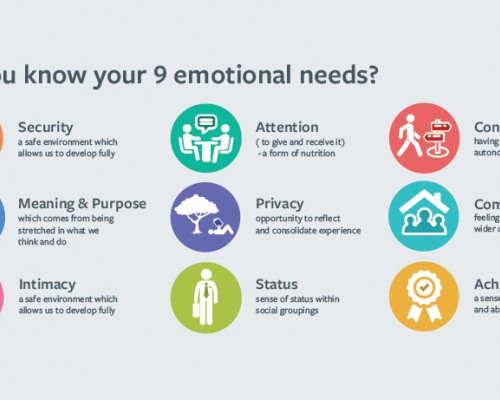Why we Dream
Last night, while you slept, you were often dreaming.
You probably don't remember because, for a very good reason, we evolved not to. However, normally we humans dream every night and most mammals show evidence of this brain pattern too.
Dream interpretation
Dreaming seems such a strange thing yet it is one of our nightly biological functions. Since time immemorial people have puzzled over the meaning of dreams, these often bizarre night-time visitations that can seem so intensely real and full of meaning whilst we experience them, but so unfathomable to our conscious mind when we wake up.
In all historical periods, right up to the present, dream interpretation industries, some more suspect than others, have flourished to satisfy our natural longing to understand the mysterious 'messages' that dreams seem to carry.
Why did we evolve to dream?
The insights of one of the founders of human givens approach, psychologist Joe Griffin, are at the heart of the human givens school of psychology. They have a richness that helps transform our understanding of consciousness and explain many previously mysterious phenomena, including the symptoms of depression and psychosis, and hypnotic states.
His research first showed that all dreams are expressed in the form of sensory metaphors.
The reason for this is found in the biology of dreaming and the REM dream state itself, which all mammals go into. Research indicates that instinctive behaviours are programmed into foetuses and newborns while they are experiencing REM sleep in the womb and after birth – accounting for 80 and 67 per cent of their time, respectively. This programming takes the form of being taught to ‘look for’ whatever will aid our survival and wellbeing after birth and is necessarily in the form of incomplete patterns, so that mammals and birds can match them up to sensory components in the real world. These ‘analogical templates’ give animals the ability to respond to the environment in a flexible way and generate the ability to learn, rather than just react.

We can see this process beautifully when a baby seeks out and sucks on anything similar — analogous to — a nipple, such as a finger or rubber teat, or a bird seeks out anything ‘twig-like’ to use to make a nest.
What has this got to do with dreaming? Once an instinct-driven pattern is activated and we have the expectation of completing it, that expectation stays ‘live’ until we do so. However, if we really had to carry out every urge we experience, that would go against survival. In the animal kingdom, creatures wouldn’t last long if they acted on an urge to mate or eat something tasty when a predator was just around the corner.
We can also easily see how this works even in our own ‘civilised’ lives. If we feel angry and let off steam, it usually dissipates the anger. But imagine if the person we feel angry with is the boss; if we still go ahead and give him or her a biff, we probably won’t stay employed in the company very long, with all the knock-on adverse effects on our finances, relationships, wellbeing, etc. It might even be that we had misconstrued what the boss said. Or we have the right to feel angry but need to find a more constructive way of expressing our grievances.
So animals needed to evolve the ability to inhibit arousals when necessary and deactivate them later when they could do no harm. That is why we evolved to dream. During REM sleep unfulfilled emotional expectations left over from the day are run out in the form of metaphors, thus deactivating them and freeing up the brain to deal with whatever new emotionally arousing events occur the next day. Without dreams fulfilling our expectations by acting them out (metaphorically, so that these dream sequences are not confused with what happened in real life) we would need a vastly bigger brain to hold them all.
The expectation fulfilment theory of dreams
With psychologist Joe Griffin's 'expectation fulfilment theory of dreams', we have the first explanation that accounts for every aspect of the nature of dreaming, and what dreams are actually doing for us.
Dreaming is the deepest trance state we go into. The three essential points to understand about dreaming are:
- Dreams are metaphorical translations of waking expectations.
- Expectations which cause emotional arousal that is not discharged during the day become dreams during sleep.
- Dreaming deactivates that emotional arousal by completing the expectation pattern metaphorically, freeing the brain to respond afresh to the emotional challenges of each new day.
Using dreams in therapy
Dream metaphors that clients bring to therapy can have therapeutic value, if the therapist is able to help the client track back to what aroused them the previous day that they didn’t act on. Such dreams may help clients recognise more objectively what is troubling them emotionally and put things in better perspective. For instance, if they were worrying about an upcoming journey, they might dream of a horrific train crash and frighten themselves in thinking that this ‘meant’ something ominous, whereas it was just a means of discharging the arousal caused by the unhelpful worry itself.
Hypnosis is a direct means of activating deep trance akin to that which is naturally experienced during REM sleep, and thus can be used therapeutically to great effect by practitioners who are trained to use it properly.
Latest Tweets:
Tweets by humangivensLatest News:
HG practitioner participates in global congress
HG practitioner Felicity Jaffrey, who lives and works in Egypt, received the extraordinary honour of being invited to speak at Egypt’s hugely prestigious Global Congress on Population, Health and Human Development (PHDC24) in Cairo in October.
SCoPEd - latest update
The six SCoPEd partners have published their latest update on the important work currently underway with regards to the SCoPEd framework implementation, governance and impact assessment.
Date posted: 14/02/2024












